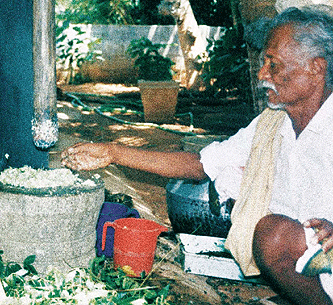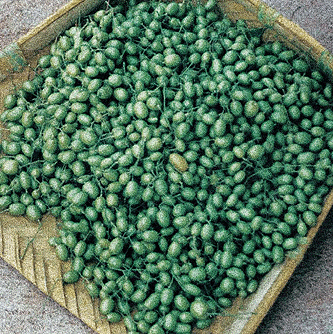 COUNTRY OF ORIGIN
COUNTRY OF ORIGINThe raincoat package for soil, plant, animal and human health
International interest
It was in 1962 that Pradhan et al. reported the deterrent property of Neem seed kernel suspension against feeding by the desert locust Schistocerca gregaria. That marked the beginning of international research about Neem which continues until today.
Three international conferences held in Germany in 1980, 1983 and 1986 further spurred international interest in Neem. In 1983 the International Agricultural Research Institute (IARI) in New Delhi organised a national seminar on Neem in agriculture, resulting in the production of a special publication, and in 1984 it launched the Neem Newsletter. The National Research Council (United States) published extensive data about Neem in the 1992 book Neem: a tree for solving global problems.
In 1993 India hosted the World Neem Conference, while Australia organised another international conference in 1996. Around the same time the South Asian Association for Regional Cooperation (SAARC), the East-West Center in Honolulu and the International Rice Research Institute in Manila organised various meetings to explore the chemical action of Neem to combat pests.
In a report called Neem – A tree to solve global problems, the Washington-based National Research Council says: "Probably no other plant yields as many strange and varied products or has as many exploitable byproducts as the Neem.… This tree for the 21st century may usher in a new era in pest control, provide millions with inexpensive medicines, cut down the rate of human population growth and perhaps even reduce erosion, deforestation and the excessive temperatures of an overheated globe."
The Indian people feel so strongly about the importance of the plant that they introduced it in other countries, both in Africa (in the tropical belt from Somalia to Mauritania), and in some South Pacific Islands. In Malaysia and the Philippines there are large-scale plantations. About 50 000 trees were planted near Mecca to provide shade for pilgrims.
There are projects for Neem cultivation sponsored by UNIDO, UNEP, GTZ and the Friedrich-Naumann Foundation, in recognition of its usefulness at both the ecological and economical levels. CARE, USAID and AFGRO are founding programmes for Neem cultivation in South Asia, Africa and Central and South America. There are large-scale plantations of Neem in Nicaragua, Honduras, Cuba and the Dominican Republic
In 1992 the El Buchal cooperative in Dahajuro, Venezuela began a project to cultivate 11 000 Neem trees providing fruits and seeds as products. The project is now involving city people living nearby who are planting Neem trees in the schools, in gardens and on the streets. In Kenya the Director of the Wamirithu Herbal Clinic started to use Neem as a remedy for ulcers (80% of cases cured), gout (cured in one week), pneumonia (cured in 3 weeks), chest-related diseases (cured in 3 days) and malaria (cured in one week), all of which are excellent results. In Gambia tomato plants matured several weeks earlier and had more numerous and larger branches when mulched with Neem leaves. Because of its valuable firewood, Neem has become the most important plantation species in northern Nigeria. Charcoal made from Neem wood is of excellent quality.
In many part of Asia Neem honey fetches a high price and people and NGOs are promoting apiculture through the planting of Neem trees. Neem leaves have been used as mulch in tobacco fields in the Jaffna district of Sri Lanka. In Nepal BIRD is promoting the cultivation of Neem in Terai for a future organic farming development programme. BIRD is also interested in incomegenerating activities related to Neem products. In Bangladesh COE (an Italian NGO) is including Neem among the more important income-generating and health-promoting plants, to be cultivated and used by the poorest rural communities, as part of a project funded by the Italian Ministry of Foreign Affairs in cooperation with the NGO DALIT. COE is focusing field research on Neem, which in India is conducted by Dr. Maria Pia Macchi as part of a project initiated in 2002 by the Italian Ministry of Foreign Affairs for the valorisation of local health traditions in Asia, Africa and South America.
DOWNLOAD THE BROCHURE PDF
english (0.7 MB)spanish (0.7 MB)
albanian (0.8 MB)
ONLY TEXT
•The raincoat package in practice







